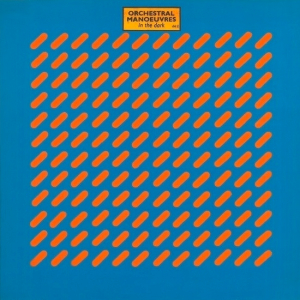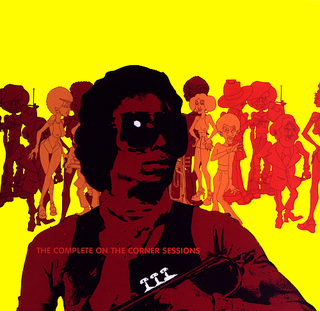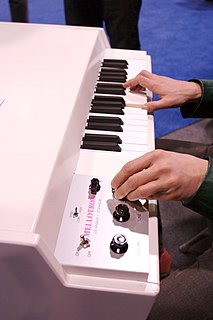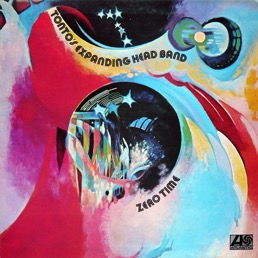Synth-pop is a subgenre of new wave music that first became prominent in the late 1970s and features the synthesizer as the dominant musical instrument. It was prefigured in the 1960s by psychedelic rock and pop which incorporated new electronic sound effects and recording effects and early 1970s by the use of synthesizers in progressive rock, electronic, art rock, disco, and particularly the Krautrock of bands like Kraftwerk. It arose as a distinct genre in Japan and the United Kingdom in the post-punk era as part of the new wave movement of the late 1970s to the mid-1980s.

Vincent John Martin, known professionally as Vince Clarke, is an English synth-pop musician and songwriter. Clarke has been the main composer and musician of the band Erasure since its inception in 1985, and was previously the main songwriter of several groups, including Depeche Mode, Yazoo, and the Assembly. In Erasure he is known for his deadpan and low-key onstage demeanour, often remaining motionless over his keyboard, in sharp contrast to vocalist Andy Bell's animated and hyperactive frontman antics.

Goldfrapp are an English electronic music duo from London, formed in 1999. The duo consists of Alison Goldfrapp and Will Gregory (synthesiser).

Cluster & Eno is a collaborative album by German electronic music group Cluster and English ambient musician Brian Eno. The style of this album is a collection of gentle melodies: a mixture of Eno's ambient sensibilities and Cluster's avant-garde style.

Cluster were a German musical duo consisting of Hans-Joachim Roedelius and Dieter Moebius, formed in 1971 and associated with West Germany's krautrock and kosmische music scenes. Born from the earlier Berlin-based group Kluster, they relocated in 1971 into the countryside village of Forst, Lower Saxony, where they built a studio and collaborated with musicians such as Conny Plank, Brian Eno, and Michael Rother; with the latter, they formed the influential side-project Harmonia. After first disbanding in 1981, Cluster reunited several times: from 1989 to 1997, and from 2007 to 2010.
Arcane Device is the recording name of New York City-based experimental musician and electric guitarist David Lee Myers.

Architecture & Morality is the third studio album by English electronic band Orchestral Manoeuvres in the Dark (OMD), released on 8 November 1981 by Dindisc. Inspired by religious music, the band sought to broaden their musical palette by utilising elaborate choral samples, the Mellotron, and other new instruments to create a more naturalistic, emotive sound. The artwork was designed by longtime OMD collaborator Peter Saville, along with Brett Wickens, while its title was derived from the book Morality and Architecture by David Watkin.

Orchestral Manoeuvres in the Dark is the self-titled debut studio album by English electronic band Orchestral Manoeuvres in the Dark (OMD), released on 22 February 1980 by Dindisc. Recorded at the band's Liverpool studio, it showcased their minimal synth-pop style and peaked at number 27 on the UK Albums Chart. "Electricity" and "Red Frame/White Light" were released as singles; a re-recorded version of "Messages" provided OMD with their first hit in the UK, reaching number 13.

A synthesizer is an electronic musical instrument that generates audio signals. Synthesizers typically create sounds by generating waveforms, through methods including subtractive synthesis, additive synthesis and frequency modulation synthesis. These sounds may be altered by components such as filters, which cut or boost frequencies; envelopes, which control articulation, or how notes begin and end; and low-frequency oscillators, which modulate parameters such as pitch, volume, or filter characteristics affecting timbre. Synthesizers are typically played with keyboards or controlled by sequencers, software or other instruments, and may be synchronized to other equipment via MIDI.

The Complete On the Corner Sessions is a posthumous box set by American jazz musician Miles Davis, released in the US on September 25, 2007, by Columbia Records and in the UK on September 29 on Legacy Recordings. Like other Davis box sets, the included material is taken from a wider chronology of sessions than the dates which actually produced the titular album. The Complete On the Corner Sessions compiles material from 1972 through 1975 which, due to lineup changes Davis made throughout the era, features over two dozen musicians.
York House Recordings, also known as YHR or YHR Tapes, was a small British independent label which released 31 original cassettes of industrial, electronic, experimental, avant-garde, and dark ambient music between 1979 and 1983.

Asmus Tietchens, who also records under the monikers Hematic Sunsets and Club of Rome, is a German composer of avant-garde music. Tietchens became interested in experimental music and musique concrète as a child, and began recording sound experiments in 1965 with electronic musical instruments, synthesizers and tape loops. In the 1970s he met producer Okko Bekker, and the two formed a decades-long partnership. Peter Baumann heard a recording of Tietchens' music and offered to produce an album; the result was Nachtstücke, Tietchens' 1980 offering on Egg Records. His early recordings feature more accessible synthesized music, but beginning with Formen Letzer Hausmusik, his 1984 release for Nurse With Wound's label United Dairies, he began moving toward more abstract sound collages. He has taught acoustics in Hamburg since 1990.

The use of electronic music technology in rock music coincided with the practical availability of electronic musical instruments and the genre's emergence as a distinct style. Rock music has been highly dependent on technological developments, particularly the invention and refinement of the synthesizer, the development of the MIDI digital format and computer technology.

Kohei Matsunaga is an electronic musician and draughtsman born in 1978 in Osaka, Japan, currently residing in Osaka and Berlin, Germany.

Zero Time is the debut album by British-American electronic music duo Tonto's Expanding Head Band, released on 15 June 1971 by Embryo Records. The album is a showcase for TONTO, a multitimbral, polyphonic synthesiser build by the two members of the band, Malcolm Cecil and Robert Margouleff, as a developed version of the Moog III synth in 1969. The duo began producing their own music together on the synth with the intention to push the machine's abilities, and their own abilities as musicians, to the limit. Recording their compositions in New York, they approached TONTO with no pre-conceived notions and intended to make music intrinsic to the synthesiser.

Remember is the ninth studio album by the German solo artist Michael Rother. It was released on 25 April 2004. The studio album was Rother's first since 1996 and his sole full release of material in the 2000s. It would take sixteen years till his next album. Dreaming was released in 2020.

All Hours is the sixth and final studio album by American band Ivy, released by Nettwerk on September 20, 2011. Following 2005's In the Clear, the members took a hiatus from music, allowing Andy Chase and Adam Schlesinger to work on side projects and Dominique Durand and Chase to begin raising a family. After reuniting in 2008, they started work on a project exploring a new sound following concerns that their songs would become obsolete and unimaginative due to their break. All Hours features 11 songs written and produced by Chase and Schlesinger; they take influence from electropop, indie pop and synth-pop music. Unlike their previous albums, All Hours experiments more with electronic music and contains tracks reminiscent of the music from the 1980s.
Bureau B is an independent record label, music publisher and booking agency from Hamburg, Germany, founded in 2005 by Gunther Buskies as a sister label to Tapete Records. The label releases varieties of electronic, free-spirited music, with the spectrum ranging from pop to avant-garde. The label has amassed an extensive catalogue of reissues and new productions, including classics from the genre of electronic music in the 1970s and early 1980s popularly classified as Krautrock, alongside new recordings by such formative artists as Faust, Kreidler, Roedelius, Tietchens, Moebius.

Music for Stowaways is the debut album by English electronic act British Electric Foundation (B.E.F.), formed by musicians Martyn Ware and Ian Craig Marsh. The album released in the United Kingdom as a limited edition cassette in March 1981 by Virgin Records, who also released an LP version of the album titled Music for Listening To later in the year with a different track list and cover art, aiming its release for export markets. The Stowaways version was originally released concurrently with Ware and Marsh's first single with Heaven 17, "(We Don't Need This) Fascist Groove Thang", itself a developed version of the Music for Stowaways track "Groove Thang".

Forever Alien is the third studio album by British space rock band Spectrum, a project led by Peter Kember under the pseudonym Sonic Boom. It was released in August 1997 by Space Age Records. After the band's preceding EP Songs for Owsley (1996) moved them away from guitar-oriented music and towards electronic music, Forever Alien furthered this approach considerably, as Kember aimed to create a predominately electronic album that sounded organic and analogue in style. The record is dominated by vintage analogue synthesizers, including the EMS VCS 3 and EMS Synthi AKS. Kember had become fascinated by the synths as he felt they presented him with more musical possibilities than guitars.

















